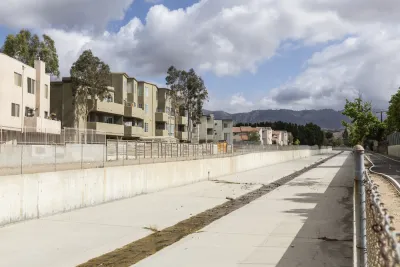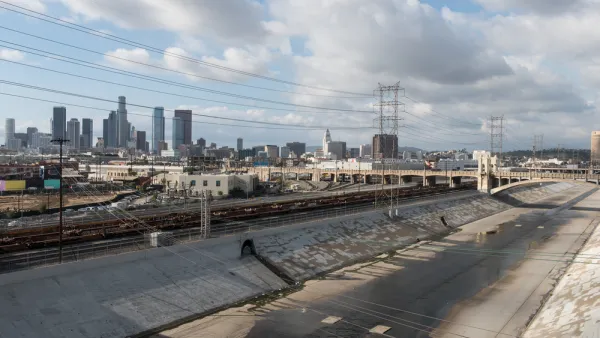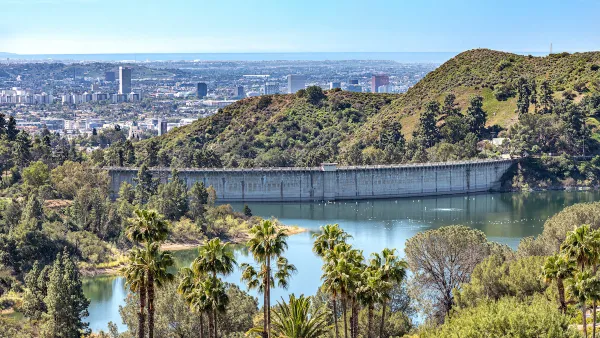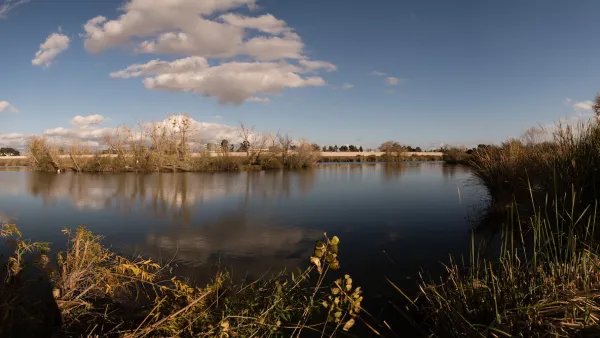In the past, stormwater management has been about flood control. The future of stormwater, however, is in capturing, treating, and recharging water supply, according to this article.

Chris Austin, otherwise known as the Maven of California water news, shares a presentation from Dr. Richard Luthy, a professor of civil and environmental engineering and the director of the National Science Foundation’s Engineering Research Center, describing the evolution of stormwater infrastructure.
According to Luthy, a shift away from stormwater management as flood control would bring multiple benefits. Not only would urban areas like Los Angeles gain critical water supply for a growing population, "it would provide other community benefits, like cleaning the beaches."
Luthy is building on existing plans by the city of Los Angeles to cut the amount of water supply it imports by half:
How is that achieved? One of the solutions is stormwater capture, and on this drawing, it says the stormwater would be 4% of the urban water supply, and in a moment I’ll show you that it could really be much more than that. It could be 3, 4, maybe even 5 times that if plans come into being in this century.”
In addition to an appeal to use bigger systems to achieve more ambitious goals, Luthy also shows how stormwater capture infrastructure can become open space and recreation facilities during dry seasons (e.g., hiking trails, basketball courts, and playfields). Finally, Luthy detailed the processes that would be necessary to treat stormwater runoff that could potentially be contaminated with pathogens, organics, and nitrates.
Renderings, schematics, and other infographics drawn directly from Luthy's presentation supplement the article.
FULL STORY: Stormwater capture, treatment and recharge for urban water supply

Analysis: Cybertruck Fatality Rate Far Exceeds That of Ford Pinto
The Tesla Cybertruck was recalled seven times last year.

National Parks Layoffs Will Cause Communities to Lose Billions
Thousands of essential park workers were laid off this week, just before the busy spring break season.

Retro-silient?: America’s First “Eco-burb,” The Woodlands Turns 50
A master-planned community north of Houston offers lessons on green infrastructure and resilient design, but falls short of its founder’s lofty affordability and walkability goals.

Test News Post 1
This is a summary

Analysis: Cybertruck Fatality Rate Far Exceeds That of Ford Pinto
The Tesla Cybertruck was recalled seven times last year.

Test News Headline 46
Test for the image on the front page.
Urban Design for Planners 1: Software Tools
This six-course series explores essential urban design concepts using open source software and equips planners with the tools they need to participate fully in the urban design process.
Planning for Universal Design
Learn the tools for implementing Universal Design in planning regulations.
EMC Planning Group, Inc.
Planetizen
Planetizen
Mpact (formerly Rail~Volution)
Great Falls Development Authority, Inc.
HUDs Office of Policy Development and Research
NYU Wagner Graduate School of Public Service




























